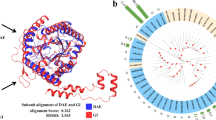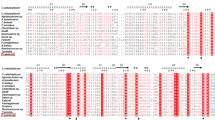Abstract
d-Allulose is a rare monosaccharide that exists in extremely small quantities in nature, and it is also hard to prepare at a large scale via chemical or enzyme synthetic route due to low conversion and downstream separation complexity. Using d-psicose epimerase and l-rhamnulose kinase, a method enabling high conversion of d-allulose from d-fructose without the need for a tedious isomer separation step was established recently. However, this method requires expensive ATP to facilitate the reaction. In the present study, an ATP regenerate system was developed coupling with polyphosphate kinase. In our optimized reaction with purified enzymes, the conversion rate of 99% d-fructose was achieved at the concentrations of 2 mM ATP, 5 mM polyphosphate, 20 mM d-fructose, and 20 mM Mg2+ when incubated at 50 °C and at pH 7.5. ATP usage can be reduced to 10% of the theoretical amount compared to that without the ATP regeneration system. A fed-batch mode was also studied to minimize the inhibitory effect of polyphosphate. The biosynthetic system reported here offers a potential and promising platform for the conversion of d-fructose into d-allulose at reduced ATP cost.









Similar content being viewed by others
References
Zhang, W., Yu, S., Zhang, T., Jiang, B., & Mu, W. (2016). Recent advances in d-allulose: Physiological functionalities, applications, and biological production. Trends in Food Science & Technology, 54, 127–137.
Park, C. S., Shin, K. C., & Oh, D. K. (2016). Production of d-psicose from d-fructose by whole recombinant cells with high-level expression of d-psicose 3-epimerase from Agrobacterium tumefaciens. Journal of Bioscience and Bioengineering, 121, 186–190.
Wenli, Z., Dan, F., Qingchao, X., Leon, Z., Bo, J., & Wanmeng, M. (2013). Characterization of a novel metal-dependent d-psicose 3-epimerase from Clostridium scindens 35704. PLoS ONE, 8, e62987.
Zeng, Y., Zhang, X., Guan, Y., & Sun, Y. (2011). Characteristics and antioxidant activity of Maillard reaction products from psicose-lysine and fructose-lysine model systems. Journal of Food Science, 76, C398–C403.
Li, C., Lin, J., Guo, Q., Zhang, C., Du, K., Lin, H., et al. (2018). D-psicose 3-epimerase secretory overexpression, immobilization, and d-psicose biotransformation, separation and crystallization. Journal of Chemical Technology & Biotechnology, 93(2), 350–357.
Kim, H. J., Hyun, E. K., Kim, Y. S., Lee, Y. J., & Oh, D. K. (2006). Characterization of an Agrobacterium tumefaciens d-psicose 3-epimerase that converts d-fructose to d-psicose. Applied and Environment Microbiology, 72(2), 981–985.
Yang, P., Zhu, X., Zheng, Z., Mu, D., Jiang, S., Luo, S., et al. (2018). Cell regeneration and cyclic catalysis of engineered Kluyveromyces marxianus of a d-psicose-3-epimerase gene from Agrobacterium tumefaciens for d-allulose production. World Journal of Microbiology & Biotechnology, 34, 65.
Zhang, L., Mu, W., Jiang, B., & Zhang, T. (2009). Characterization of d-tagatose-3-epimerase from Rhodobacter sphaeroides that converts d-fructose into d-psicose. Biotechnology Letters, 31, 857–862.
Xing, Q. (2013). Characterization of a metal-dependent d-psicose 3-epimerase from a novel strain, Desmospora sp. 8437. Journal of Agriculture and Food Chemistry, 61, 11468–11476.
Wen, L., Huang, K., Wei, M., Meisner, J., Liu, Y., & Garner, K. (2015). Facile enzymatic synthesis of ketoses. Angewandte Chemie, 54(43), 12654–12658.
Rodionova, I. A., Yang, C., Li, X., Kurnasov, O. V., Best, A. A., Osterman, A. L., et al. (2012). Diversity and versatility of the Thermotoga maritima sugar kinome. Journal of Bacteriology, 194, 5552–5563.
Wen, L., Huang, K., Liu, Y., & Wang, P. G. (2016). Facile enzymatic synthesis of phosphorylated ketopentoses. ACS Catalysis, 6, 1649–1654.
Kuniyoshi, T., & Mikio, H. (1963). Method for the preparation of adenosine 5’-triphosphate: U.S. Patent No. 3,079,379. Washington, DC: U.S. Patent and Trademark Office.
Hara, K. Y., & Kondo, A. (2015). ATP regulation in bioproduction. Microbial Cell Factories, 14, 198.
Lee, H. Y., Magotra, M., Wong, T. Y., Chakraborty, C., & Liu, J. K. (2012). ATP-dependent fructose uptake system in Deinococcus radiodurans. Applied Microbiology and Biotechnology, 93, 1241–1248.
Iwamoto, S., Motomura, K., Shinoda, Y., Urata, M., Kato, J., Takiguchi, N., et al. (2007). Use of an Escherichia coli recombinant producing thermostable polyphosphate kinase as an ATP regenerator to produce fructose 1,6-diphosphate. Applied and Environment Microbiology, 73, 5676.
An, C., Zhao, L., Wei, Z., & Zhou, X. (2017). Chemoenzymatic synthesis of 3’-phosphoadenosine-5’-phosphosulfate coupling with an ATP regeneration system. Applied Microbiology and Biotechnology, 101, 1–10.
Andexer, J. N., & Richter, M. (2015). Emerging enzymes for ATP regeneration in biocatalytic processes. Chembiochem A European Journal of Chemical Biology, 16, 380–386.
Xing, Z., Hui, W., Bing, H., Li, Z., & Ye, Q. (2017). One-pot synthesis of glutathione by a two-enzyme cascade using a thermophilic ATP regeneration system. Journal of Biotechnology, 241, 163–169.
Kameda, A., Shiba, T., Kawazoe, Y., Satoh, Y., Ihara, Y., Munekata, M., et al. (2001). A novel ATP regeneration system using polyphosphate-AMP phosphotransferase and polyphosphate kinase. Journal of Bioscience and Bioengineering, 91, 557–563.
Murata, K., Uchida, T., Kato, J., & Chibata, I. (1988). Polyphosphate kinase: Distribution, some properties and its application as an ATP regeneration system. Agricultural and Biological Chemistry, 52, 1471–1477.
Kuroda, A., & Kornberg, A. (1997). Polyphosphate kinase as a nucleoside diphosphate kinase in Escherichia coli and Pseudomonas aeruginosa. Proceedings of the National Academy of Sciences USA, 94, 439–442.
Noguchi, T., & Shiba, T. (1998). Use of Escherichia coli polyphosphate kinase for oligosaccharide synthesis. Bioscience, Biotechnology, and Biochemistry, 62, 1594–1596.
Liu, S., Li, Y., & Zhu, J. (2016). Enzymatic production of l-theanine by γ-glutamylmethylamide synthetase coupling with an ATP regeneration system based on polyphosphate kinase. Process Biochemistry, 51, 1458–1463.
Sato, M., Masuda, Y., Kirimura, K., & Kino, K. (2007). Thermostable ATP regeneration system using polyphosphate kinase from Thermosynechococcus elongatus BP-1 for D-amino acid dipeptide synthesis. Journal of Bioscience and Bioengineering, 103, 179–184.
Rossolini, G. M., Thaller, M. C., Pezzi, R., & Satta, G. (1994). Identification of an Escherichia coli periplasmic acid phosphatase containing of a 27 kDa-polypeptide component. FEMS Microbiology Letters, 118, 167–173.
Grueninger, D., & Schulz, G. E. (2006). Structure and reaction mechanism of L-rhamnulose kinase from Escherichia coli. Journal of Molecular Biology, 359, 787–797.
Akiyama, M., Crooke, E., & Kornberg, A. (1992). The polyphosphate kinase gene of Escherichia coli. Isolation and sequence of the ppk gene and membrane location of the protein. Journal of Biological Chemistry, 267, 22556–22561.
Liu, Z., Zhang, J., Chen, X., & Wang, P. G. (2015). Combined biosynthetic pathway for de novo production of UDP-galactose: Catalysis with multiple enzymes immobilized on agarose beads. Chembiochem: A European Journal of Chemical Biology, 3, 348–355.
Patel, S. N., Sharma, M., Lata, K., Singh, U., Kumar, V., Sangwa, R. S., et al. (2016). Improved operational stability of d-psicose 3-epimerase by a novel protein engineering strategy, and d-psicose production from fruit and vegetable residues. Bioresource Technology, 216, 121–127.
Choi, J. G., Ju, Y. H., Yeom, S. J., & Oh, D. K. (2011). Improvement in the thermostability of d-psicose 3-epimerase from Agrobacterium tumefaciens by random and site-directed mutagenesis. Applied and Environment Microbiology, 77, 7316–7320.
Li, C., Zhang, C., Lin, J., Gao, L., Lin, H., & Lin, J. (2018). Enzymatic fructose removal from D-psicose bioproduction model solution and the system modeling and simulation. Journal of Chemical Technology & Biotechnology, 93, 1249–1260.
Shimane, M., Sugai, Y., Kainuma, R., Natsume, M., & Kawaide, H. (2012). Mevalonate-dependent enzymatic synthesis of amorphadiene driven by an ATP-regeneration system using polyphosphate kinase. Bioscience, biotechnology, and biochemistry, 76, 1558–1560.
Shiba, T., Tsutsumi, K., Ishige, K., & Noguchi, T. (2000). Inorganic polyphosphate and polyphosphate kinase: Their novel biological functions and applications (review). Biochemistry Biokhimiia, 65, 315–323.
Nakamichi, Y., Yoshioka, A., Kawai, S., & Murata, K. (2013). Conferring the ability to utilize inorganic polyphosphate on ATP-specific NAD kinase. Scientific Reports, 3, 274–274.
Restiawaty, E., Iwasa, Y., Maya, S., Honda, K., Omasa, T., Hirota, R., et al. (2011). Feasibility of thermophilic adenosine triphosphate-regeneration system using Thermus thermophilus polyphosphate kinase. Process Biochemistry, 46, 1747–1752.
Shaeri, J., Wright, I., Rathbone, E. B., Wohlgemuth, R., & Woodley, J. M. (2008). Characterization of enzymatic D-xylulose 5-phosphate synthesis. Biotechnology and Bioengineering, 101, 761–767.
Cao, H., Li, C., Zhao, J., Wang, F., Tan, T., & Liu, L. (2018). Enzymatic production of glutathione coupling with an ATP regeneration system based on polyphosphate kinase. Applied Biochemistry and Biotechnology, 185, 385–395.
Lindner, S. N., Niederholtmeyer, H., Schmitz, K., Schoberth, S. M., & Wendisch, V. F. (2010). Polyphosphate/ATP-dependent NAD kinase of Corynebacterium glutamicum: Biochemical properties and impact of ppK overexpression on lysine production. Applied Microbiology and Biotechnology, 87, 583–593.
Meng, Q., Zhang, Y., Ju, X., Ma, C., Ma, P. D., Chen, J., et al. (2016). Production of 5-aminolevulinic acid by cell free multi-enzyme catalysis. Journal of Biotechnology, 226, 8–13.
Pei, J., Chen, A., Zhao, L., Cao, F., Ding, G., & Xiao, W. (2017). One-pot synthesis of hyperoside by a three-enzyme cascade using a UDP-galactose regeneration system. Journal of Agriculture and Food Chemistry, 65, 6042–6048.
Acknowledgements
The above study was financially supported by the Ministry of Education of Singapore (Grant No. 17GAP002).
Author information
Authors and Affiliations
Corresponding authors
Additional information
Publisher's Note
Springer Nature remains neutral with regard to jurisdictional claims in published maps and institutional affiliations.
Rights and permissions
About this article
Cite this article
Xiao, Q., Niu, J., Liu, H. et al. High Conversion of d-Fructose into d-Allulose by Enzymes Coupling with an ATP Regeneration System. Mol Biotechnol 61, 432–441 (2019). https://doi.org/10.1007/s12033-019-00174-6
Published:
Issue Date:
DOI: https://doi.org/10.1007/s12033-019-00174-6




